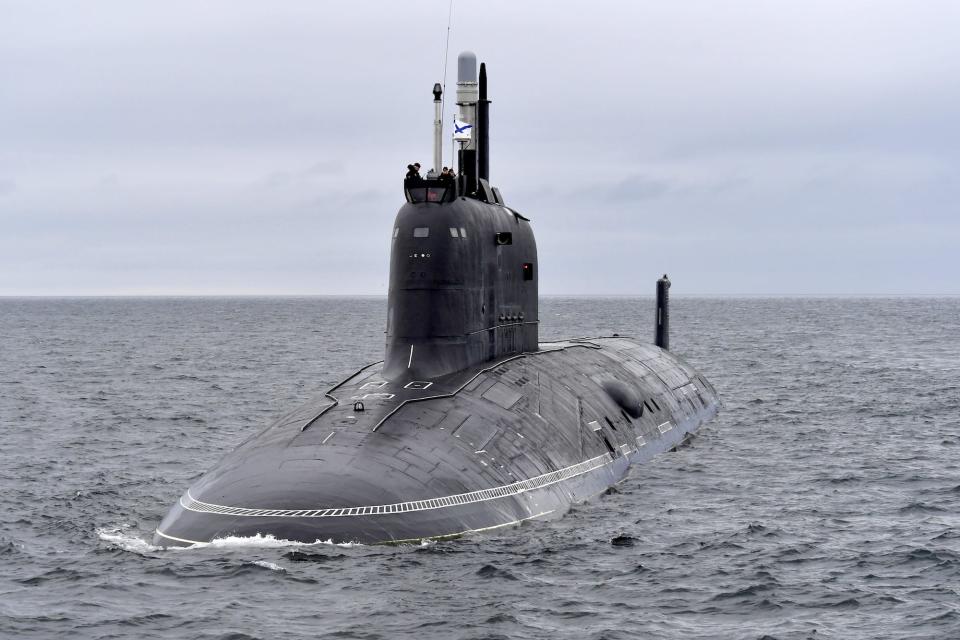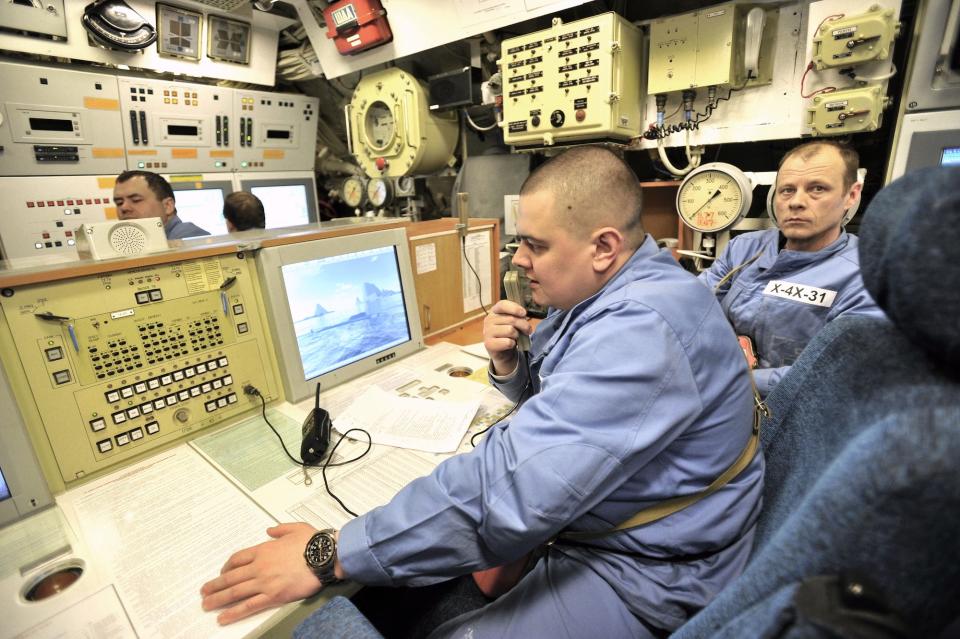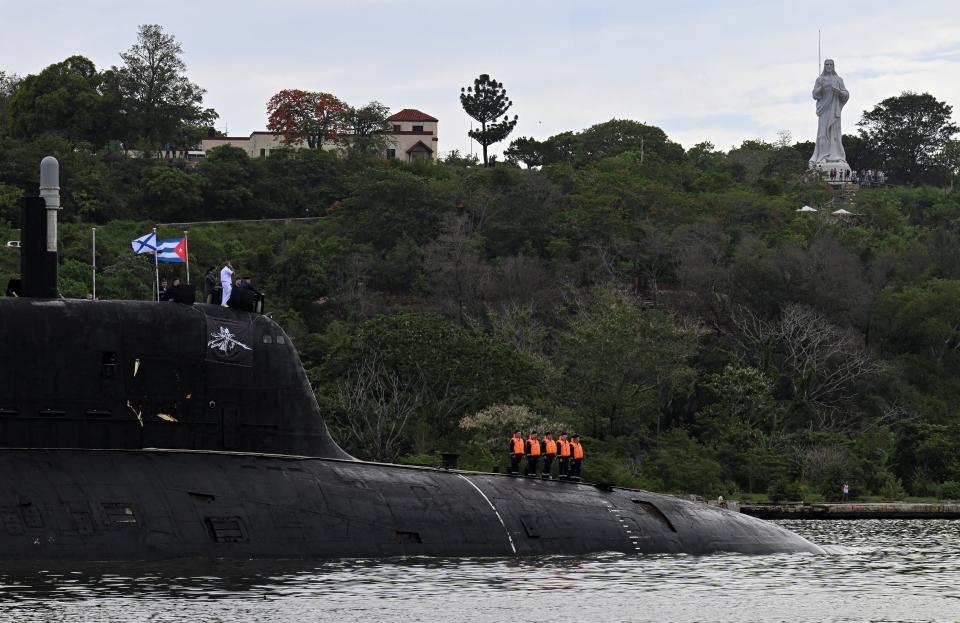The Russian submarine that just showed up off Cuba is one of a new class of subs that has worried the US and NATO for years
Russian naval ships arrived in Cuba Wednesday ahead of military exercises in the Caribbean.
One of the vessels, the submarine Kazan, is one of a new class that has worried the US and NATO.
The Yasen-class subs are hard to track and armed for attacks against land- and sea-based targets.
One of Russia's most advanced new submarines has pulled up off the coast of Cuba ahead of planned military exercises in the area.
The Kazan, a nuclear-powered cruise missile submarine, is one of a relatively new class of subs that has worried the US and Western militaries for years because of its stealth and strike capabilities.
Three Russian ships, along with the Kazan, arrived in Cuba Wednesday for a five-day official visit before a large, simultaneous air and maritime exercise in the Caribbean. The deployment includes the Admiral Gorshkov frigate, which is armed with Zircon hypersonic missiles, another challenge for Western militaries.
While US officials have said they're monitoring the vessels and don't anticipate any imminent danger in the region, the Kazan's arrival is notable. US and NATO officials have long expressed concern over the capabilities of the Kazan and other subs like it.

Russia's Yasen-class submarines, like the Kazan, are formidable threats within Russia's navy, which has long boasted a rather capable submarine fleet. The Russians began work on the class during the Cold War, and the first sub in the class, the Severodvinsk, was commissioned late in 2013.
Around the time the Severodvinsk was commissioned, a Naval Sea Systems Command officer said at a symposium that going forward, the US would "be facing tough potential opponents," adding that "one only has to look at the Severodvinsk."
Later submarines featured updated designs and were designated as Yasen-M class vessels. The Kazan was the second sub of the Yasen class but the first of the new, upgraded subs. It is noticeably smaller and features a quieter nuclear reactor. Western officials have said that their naval forces have had trouble finding these subs or have at times lost track of them at sea.
The subs' newer, more advanced features make them difficult to track, and they're heavily armed and capable of attacks against land- and sea-based targets with little to no warning. These boats can carry Oniks and Kalibr cruise missiles and, eventually, the new Zircon missiles.

The shift in capability with the emergence of the Yasen-M class submarines suggested a change in use. Per a 2021 Royal United Services Institute analysis, the Kazan's "capacity to launch a range of anti-ship and land attack missiles" suggests that "long-range strike missions appear to be superseding sea lines of communication (SLOC) interdiction as a primary task."
In 2021, US Air Force Gen. Glen VanHerck, the head of US Northern Command and North American Aerospace Defense Command, said that the subs "are designed to deploy undetected within cruise-missile range of our coastlines to threaten critical infrastructure during an escalating crisis."
VanHerck, along with other US officials, have said that the Yasen-class subs are a concern and "on par with ours" and repeatedly warned about the increasing presence of these vessels off of the US coast. A US naval intelligence official previously said that the Russian subs are "holding the United States at risk in some of their patrol areas."
Russia plans to build at least nine Yasen submarines in total, but there are indications that more could be on the way in the future.

Russia's deployment in Cuba serves multiple purposes. It comes before Caribbean air and maritime exercises, the first Russia has held in the area since 2019. It serves to strengthen Russia-Cuba ties, and it demonstrates a show of force to the US amid the war in Ukraine.
Tensions are particularly high after the US hesitantly agreed to allow Ukraine to use its long-range weapons to strike targets in Russian territory.
US officials have said that the appearance of these vessels in the area is not a direct response to those developments or an escalation, noting that Cuba has hosted Russian ships every year from 2013 to 2020, and the Russian exercises are routine.
The vessels in this group, however, are among Russia's most advanced or carrying newer weapons. In the past, NATO officials have flagged the Yasen-class submarines as "one of the big strategic challenges" the alliance faces.
Read the original article on Business Insider

 Yahoo News
Yahoo News 
